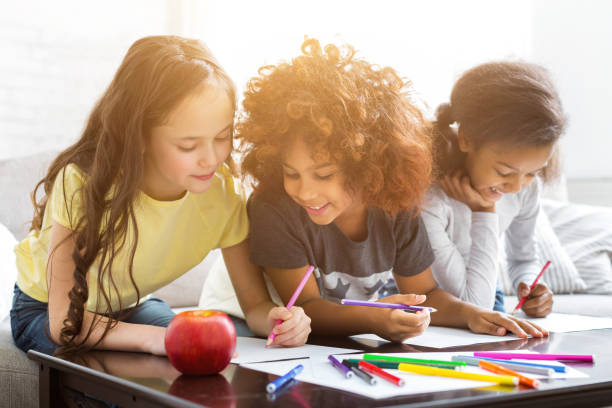Preschool teachers often have difficulty managing children’s problematic behaviours, including throwing objects, disrupting other children’s activities, kicking or hitting, etc. Although these behaviours can be brief and simple to control, they can persist and be severe in some instances. These behaviours can interfere significantly with the child’s development and engagement in social interaction with adults and peers. Studies have revealed infants’ and toddlers’ varying social-emotional abilities (e.g. empathy, self-regulation, and cooperative behaviour). Children who start school and are lacking in these areas could be at difficulties and face difficult times getting used to the new environment. Additionally, if the social-emotional gaps persist in time, there could be serious consequences in other areas.
Prevention is always better than cure!
Contrary to the common belief that you should intervene only in the event of problems, Everyone would agree that prevention is the best option! With this in mind, I’ll discuss the most common preventive strategies related to the classroom that preschool teachers can employ intentionally. These strategies aim to boost the probability of positive social interactions and reduce children’s problematic behaviours and the need to provide more or more extensive interferences.
Create a welcoming and distinctive classroom environment
The basic arrangement of the classroom, as well as the resources available, are crucial elements of the classroom that impact children’s behavior and interactions with peers. So, educators can help limit the possibility of challenging behavior for early childhood initiatives and enhance children’s social behavior and involvement in the classroom by:
(a) clearly outlining the limits for each block of learning.
(b) distinguishing the active work zones as distinct from calm and peaceful play spaces.
(c) avoid congested areas to ensure that movement within the classroom is not hindered by learning.
(d) with enough diverse and useful material for children.
A regular and predictable schedule of daily activities programs, such as well-balanced large and small assembly activities, active and calm games, free play, and structured activities, may enhance the likelihood that children are involved in positive behaviour.
The transitions between routines or experiences are when problematic behaviour is more likely to be observed. A way for educators to reduce the amount of time that is needed between practices or activities is to make sure that children are aware of what they should do at these particular moments. The transitions can be made more efficient by using visual (e.g. an image that outlines the sequence of activities and routines throughout the day using images of children) as well as textual clues (e.g. making a list of activities for a few minutes before changing, by using a familiar song to help prepare for the changing time).
Instruct children and explain the behavior expected of children.
Children may display inappropriate behaviour due to the expectations of the classroom aren’t clear. The clear rules of the classroom and routines help children understand appropriate behaviour. When considering the expectations of the classroom for behaviour and challenging behaviour that children are involved in, teachers should establish rules for behaviour: simple positive, positive, and simple to adhere to (e.g. Walking feet please and gentle touches, please, and clean up). Rules must be communicated within the class (with images of children showing desirable behaviour) and reviewed frequently with children, particularly before the time when challenging behaviour is most likely to happen. It is crucial not to neglect positive reinforcement and praise. This is especially true when children display the correct behaviour (e.g., “Zac, I liked the way you helped clean up that puzzle”) to increase the likelihood of these behaviours occurring more frequently.
What’s the purpose of connections between children and teachers?
The value of any method to deal with children’s difficult behavior depends on one crucial element: an authentic and trustworthy relationship between children and teachers characterized by warm and compassionate interactions. Numerous studies have proven that children who experience positive interactions with their teachers and with other adults tend to exhibit more positive social skills and have fewer issues with behavior. This is why creating an environment where every child feels valued and safe is essential!








